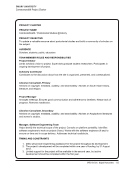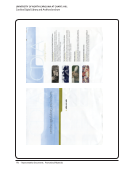SPEC Kit 326: Digital Humanities · 189
Digital Humanities: Infrastructure and Evolution
American Council of Learned Societies. Our Cultural Commonwealth: The Report of the American Council of
Learned Societies Commission on Cyberinfrastructure for the Humanities and Social Sciences. New York:
American Council of Learned Societies, 2006.
Archer, Dawn. “Digital Humanities 2006: When Two Became Many.” Literary and Linguistic Computing 23, no.
1 (April 1, 2008): 103–08.
Borgman, Christine L. Scholarship in the Digital Age: Information, Infrastructure, and the Internet. Cambridge,
Mass.: MIT Press, 2007.
Council on Library and Information Resources. Working Together or Apart: Promoting the Next Generation of
Digital Scholarship. Washington, DC, March 2009. http://www.clir.org/pubs/reports/pub145/pub145.pdf.
Flanders, Julia. “The Productive Unease of 21st-century Digital Scholarship.” DHQ: Digital Humanities
Quarterly 3, no. 3 (Summer 2009). http://digitalhumanities.org/dhq/vol/3/3/000055/000055.html.
Fraistat, Neil. “The Question(s) of Digital Humanities.” Maryland Institute for Technology in the Humanities
February 7, 2011. http://mith.umd.edu/thequestions-of-digital-humanities/.
Kirschenbaum, Matthew G. “What is Digital Humanities and What’s it Doing in English Departments?”
ADE Bulletin 150 (2010): 55–61.
McCarty, Willard, and Matthew Kirschenbaum. “Institutional Models for Humanities Computing.” Literary
and Linguistic Computing 18, no. 4 (November 1, 2003): 465–89.
Smith Rumsey, Abby. “Report of the Scholarly Communication Institute 8: Emerging Genres in Scholarly
Communication.” Scholarly Communication Institute, University of Virginia Library, July 2010.
Svensson, Patrik. “The Landscape of Digital Humanities.” DHQ: Digital Humanities Quarterly 4, no. 1
(Summer 2010). http://digitalhumanities.org/dhq/vol/4/1/000080/000080.html.
Zorich, Diane M. Digital Humanities Centers: Loci for Digital Scholarship. Council on Library and Information
Resources, November 2008. http://www.clir.org/activities/digitalscholar2/zorich.pdf.
Digital Humanities: Staffing and Support
Barribeau, Susan. “Enhancing Digital Humanities at UW-Madison: A White Paper.” University of Wisconsin
at Madison, 2009. http://dighum.wisc.edu/facultyseminar/index.html.
Blackwell, Christopher, and Thomas R. Martin. “Technology, Collaboration, and Undergraduate Research.”
DHQ: Digital Humanities Quarterly: 3, no. 1 (Winter 2009). http://digitalhumanities.org/dhq/
vol/3/1/000024/000024.html.
Blustain, Harvey, and Donald Spicer. Digital Humanities at the Crossroads: The University of Virginia. ECAR
Case Studies. Boulder, Colorado: Educause, 2005. net.educause.edu/ir/library/pdf/ers0605/cs/ecs0506.
pdf.
Digital Humanities: Infrastructure and Evolution
American Council of Learned Societies. Our Cultural Commonwealth: The Report of the American Council of
Learned Societies Commission on Cyberinfrastructure for the Humanities and Social Sciences. New York:
American Council of Learned Societies, 2006.
Archer, Dawn. “Digital Humanities 2006: When Two Became Many.” Literary and Linguistic Computing 23, no.
1 (April 1, 2008): 103–08.
Borgman, Christine L. Scholarship in the Digital Age: Information, Infrastructure, and the Internet. Cambridge,
Mass.: MIT Press, 2007.
Council on Library and Information Resources. Working Together or Apart: Promoting the Next Generation of
Digital Scholarship. Washington, DC, March 2009. http://www.clir.org/pubs/reports/pub145/pub145.pdf.
Flanders, Julia. “The Productive Unease of 21st-century Digital Scholarship.” DHQ: Digital Humanities
Quarterly 3, no. 3 (Summer 2009). http://digitalhumanities.org/dhq/vol/3/3/000055/000055.html.
Fraistat, Neil. “The Question(s) of Digital Humanities.” Maryland Institute for Technology in the Humanities
February 7, 2011. http://mith.umd.edu/thequestions-of-digital-humanities/.
Kirschenbaum, Matthew G. “What is Digital Humanities and What’s it Doing in English Departments?”
ADE Bulletin 150 (2010): 55–61.
McCarty, Willard, and Matthew Kirschenbaum. “Institutional Models for Humanities Computing.” Literary
and Linguistic Computing 18, no. 4 (November 1, 2003): 465–89.
Smith Rumsey, Abby. “Report of the Scholarly Communication Institute 8: Emerging Genres in Scholarly
Communication.” Scholarly Communication Institute, University of Virginia Library, July 2010.
Svensson, Patrik. “The Landscape of Digital Humanities.” DHQ: Digital Humanities Quarterly 4, no. 1
(Summer 2010). http://digitalhumanities.org/dhq/vol/4/1/000080/000080.html.
Zorich, Diane M. Digital Humanities Centers: Loci for Digital Scholarship. Council on Library and Information
Resources, November 2008. http://www.clir.org/activities/digitalscholar2/zorich.pdf.
Digital Humanities: Staffing and Support
Barribeau, Susan. “Enhancing Digital Humanities at UW-Madison: A White Paper.” University of Wisconsin
at Madison, 2009. http://dighum.wisc.edu/facultyseminar/index.html.
Blackwell, Christopher, and Thomas R. Martin. “Technology, Collaboration, and Undergraduate Research.”
DHQ: Digital Humanities Quarterly: 3, no. 1 (Winter 2009). http://digitalhumanities.org/dhq/
vol/3/1/000024/000024.html.
Blustain, Harvey, and Donald Spicer. Digital Humanities at the Crossroads: The University of Virginia. ECAR
Case Studies. Boulder, Colorado: Educause, 2005. net.educause.edu/ir/library/pdf/ers0605/cs/ecs0506.
pdf.


































































































































































































